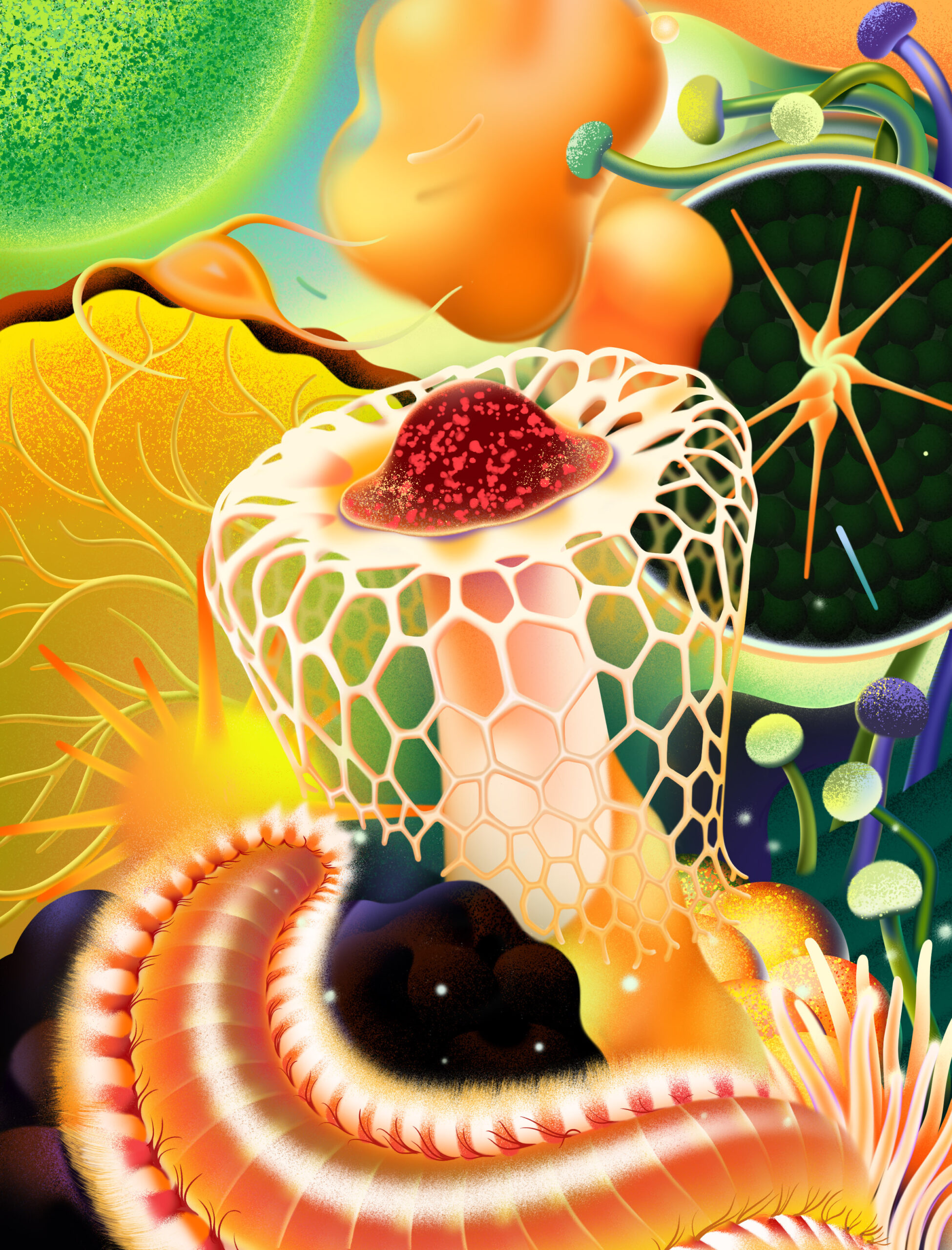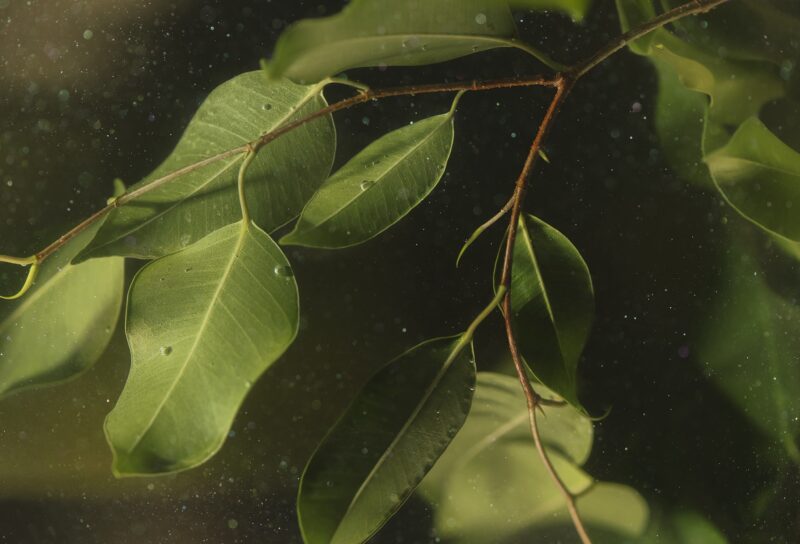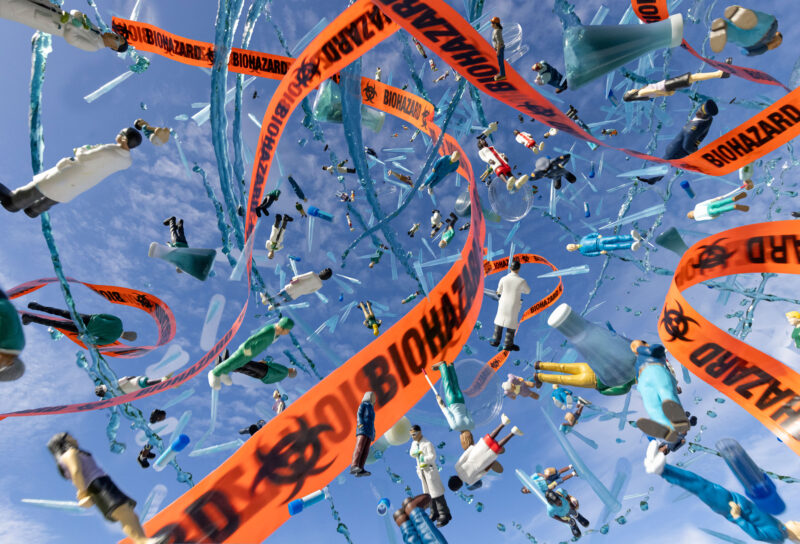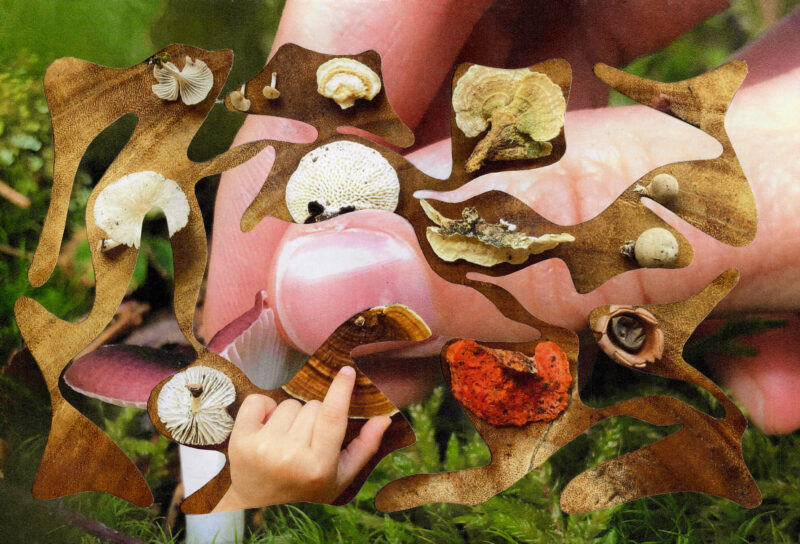One of the first things Alison Smith learned as a biochemistry student was how to grow a sterile culture of single-celled organisms called phytoplankton. Smith, now a plant scientist at the University of Cambridge, filled flask after flask with the photosynthetic green scum found in the world’s oceans. To a newbie, this seemed like an unnecessarily labor-intensive way to nurture something that grows freely in swimming pools and ponds. But the nutrient rich broth that resembled chicken stock could feed an astonishing array of microbes. If even a single extraneous cell landed in the swirling stew — an event that could occur with even the most fastidious of scientists — the interloper could multiply at a rate that would make even Adam blush. So long, pure algae; hello, contamination. To study the algal species that produced and used Vitamin B12, Smith needed to ensure that she only had one type of pond scum growing in her flasks.
Pure cultures of single organisms have historically formed microbiology’s backbone. Developed by luminaries such as Louis Pasteur and Robert Koch, the approach allowed scientists to identify some of humanity’s biggest killers, including anthrax, tuberculosis, and pneumonia. Smith knew the power of the “All for One and One for All” philosophy and spent her years as a student and young faculty member faithfully replicating the methods she had been taught.
She had only one problem: her experiments weren’t working. When Smith tried to grow algal species that were rich in B12, they often died.
“They all looked quite sickly,” she says.
Smith’s first guess was that her cultures were contaminated by something unseen. What else could possibly explain the die-offs?
Smith learned something unexpected: far from being ruined by uninvited contaminants, the problem with her algae was that they were being grown by themselves. Further experiments revealed that it wasn’t the phytoplankton making the B12 at all. The B12 that was so beneficial to humans actually came from symbiotic bacteria. When Smith subsequently searched through hundreds of algal genomes, she found many didn’t have the enzymatic pathways to make B12; those species that did produced a form that humans couldn’t use.
When Smith received a call from the European Space Agency to produce usable B12 from the algae Spirulina platensis, she knew that she had to grow not just Spirulina but also its bacterial BFF.
“The algae need B12 in their diets just like humans,” she says.
Smith is part of a small but growing number of microbiologists who are tapping into the power of building microbial communities to harness the full potential of synthetic biology. Dubbed synthetic ecology, the field endeavors to re-create miniature ecosystems rather than engineering a single organism like Escherichia coli. Synthetic ecology pioneer Daniel Segrè of Boston University says that including more species in synbio systems exponentially increases the complexity of the questions scientists can ask and the molecules they can synthesize.
“Nature spontaneously gives rise to community. There is diversity and often stable diversity,” Segrè says. “Trying to reproduce this in the lab seems to be a very good strategy.”
But that complexity comes at a price. More moving parts means more ways experiments can go wrong, says Rodrigo Ledesma-Amaro, a synthetic biologist at Imperial College London. This means more testing and fine-tuning, which translates into higher costs. But Ledesma-Amaro believes that these hurdles are surmountable. If researchers can get the idea to work, he says, these built microbial ecosystems will not only help biologists understand how these communities work in nature but also harness their huge synthetic power in the lab.
“There is no ecosystem that is colonized by a single organism. There is always a community,” says Ledesma-Amaro. “No organism can do everything.”
Anatomy of a Breakthrough
Like Smith, my days as a budding microbiologist were spent learning how to grow pure cultures of microbes. My organism of choice was the standard laboratory workhorse E. coli, which I was using to try and synthesize beetle pheromones. With a few genetic tweaks, E. coli could make the specific biologically active molecules we wanted without the laborious synthesis by humans that required pressurized ammonia and delivered, at best, terrible yields. From Day One, the need for a pure culture of E. coli was drilled into my head. In the late 1990s, I never thought about combining multiple microbial species to produce something more complicated than a 5-carbon ring that formed an irresistible Eau de Horny Cockroach.
What inspired me was not some pie-in-the-sky sci-fi future where all our food was grown in vats à la Soylent Green. Rather it was the 1978 discovery that scientists could “trick” E. coli into producing recombinant human insulin with a few simple laboratory tools. No longer would Pharma have to extract the peptide from pig pancreas and hope that the immune systems of those who depended on insulin wouldn’t learn to recognize pig proteins and attack the life-saving medicine. Other medicines would follow. Why spend days or weeks trying to synthesize a molecule from scratch (or extract it from natural sources) when you could coax a microbe into making it on command?
As the synbio revolution began to take hold and technology improved — high-throughput sequencing replacing Sanger sequencing, and CRISPR taking over from restriction enzymes and electroporation — what once sounded like science fiction was becoming reality. Vats of yeast or algae making biofuels to replace the fossil fuels that were destroying the planet seemed not only possible, but probable. Yet when scientists began to tinker with the nuts and bolts of single-species systems, they began encountering major roadblocks.
One of the biggest issues resulted from billions of years of evolution, which had selected for organisms that could reproduce and leave the most offspring. When these cells received code telling them to pump out vast quantities of recombinant insulin, this conflicted with their long-honed drive to devote energy to growth and division. Making insulin, however, was a relatively simple set of commands. Making larger, more complex molecules required the insertion of larger gene circuits and more energy to be funneled into metabolism. Sometimes, the gene circuits needed to encode a synthetic pathway were simply too massive for a single organism to handle. Even the best synthetic biologist had trouble competing with the power of natural selection. While biologists could break down the pathway into several parts, the approach would require time-consuming steps that reduced yield and added to the cost of synthesis. Using multiple species to carry out synthetic reactions could help scale this hurdle, Ledesma-Amaro says.
“Instead of having one organism with 20 modifications, we can have four organisms with five modifications each,” he says, a strategy that would prove more tractable for scientists and microbes alike.
Another issue, says Smith, was that some microbes just didn’t grow well in the lab. Microbiologists have developed any number of techniques to mimic the food and energy sources, temperatures, pressures, and co-factors that various organisms might need to survive in flasks and on Petri dishes. For some species, it was just a matter of tinkering with conditions; others stubbornly refused to grow no matter how much scientists coaxed and pleaded. One possibility, says Smith, is that perhaps some species simply can’t be grown solo. They depend on other organisms to produce various molecules, and researchers might not be able to replicate this relationship artificially.
“It’s like, I’ll make this bit and you make that bit and then together, we’ll both have enough to grow,” Smith says. “We won’t overgrow one another because neither of us would survive. That’s now accepted as the sort of currency that microbes use in microbial communities.” Building a multi-species microbial consortium had the potential to solve both these problems. “What you can actually achieve with these microbes is limitless,” says University of Sheffield microbial systems engineer Jagroop Pandhal.
But researchers had to figure out which species could be grown together and remain at relatively stable levels over time. They also had to prevent predation and cheating, in which one organism would “steal” all the benefits of co-culture without providing molecules or other benefits to the community at large.
These were massive hurdles — but not insurmountable. In a 2007 paper in PNAS, a team of scientists at Rockefeller University and Memorial Sloan-Kettering Cancer Center in New York reported such a system. Computational biologist Wenying Shou and colleagues combined two yeast strains that each required a small molecule produced by the other species. Not only were levels of the species more stable over time when both yeasts grew together, it revealed how gene circuits (in this case, the pathways responsible for the molecule synthesis) could create collective behavior in an ecosystem.
Interconnected Conversations
Living together takes a certain amount of ability and tolerance, whether you’re a human sharing an apartment with a roommate or bacteria sharing a vat with fungi, says Jake McKinlay, a microbiologist at the University of Indiana. Humans living together must negotiate over who cleans the dishes and who empties the garbage. They must split bills and decide on house rules about visitors and noise. The challenge for scientists isn’t to figure out what an organism requires, but what it’s willing to share, he points out.
This cooperation requires communication. Cells continually sense the world around them. Some information transfer is simple. Some of the chemicals surrounding a microbe floating in water can bind to receptors on the outside of the cell. But for microbes living in close contact or at high concentrations, this relatively slow, passive sensing is inadequate. Instead, bacteria and other organisms depend on more rapid forms of information transfer. Quorum sensing relies on chemical signals known as autoinducers that can switch on bacterial genes. When bacteria reach a certain density, or quorum, these signals reach high enough levels to coordinate behaviors like bioluminescence and biofilm formation. Other bacteria create electrical signals like neurons, by pumping ions in and out of their cells. “It’s a million times slower than a neuron,” says Arthur Prindle, a bioengineer with Northwestern University, “but 100 times faster than quorum sensing.”
Prindle, who has been dubbed the Microbe Whisperer, says that if researchers can understand the “language” microbes use to communicate, then they can not only listen in on these conversations but also talk back and shape microbial behavior. Decoding this crosstalk requires studying communication in a controlled way. By putting an ion channel under the control of an inducible promoter, such that the channel only functions in the presence of a known signal, Prindle says that he can drill down into how these signals work. His focus on using electrical signals to coordinate synthetic ecological systems garnered him a prestigious 2023 CAREER grant from the National Science Foundation.
By understanding electro-communication between individual cells, Prindle hopes to employ those signals to program whole communities of microbes to perform functions as varied as detoxifying contaminated waterways to creating probiotic bacteria that can be programmed to detect inflammatory bowel disease and produce therapeutic molecules during disease flares.
“What you want to create is a stable, colonized probiotic community in the gut,” Prindle says.
Even the most detailed knowledge of microbial communication, however, doesn’t tell scientists which species work best together and the most effective way to combine them. As the number of species in a community increases, the complexity of testing jumps exponentially, and it can rapidly become almost impossible to test every combination of microbes. Instead of just scaling up the number of experiments, some have turned to a process called adaptive laboratory evolution, which grows cells in prolonged cultures to allow natural selection to act on cells with beneficial mutations. This allows them to replicate thousands of experiments to determine how the system functions under various environmental conditions that might help tip the scales of evolution in various directions. By comparing the results of all these different experiments and interactions, they can gain an understanding of how these communities evolved in nature and the directions in which these ecosystems can be nudged.
At the Broad Institute, microbiologist Julie Chen is taking a different approach to building synthetic microbial communities. Instead of letting the microbes duke it out and waiting for a winning combination to emerge, Chen uses microfluidic devices to study how different species of microbes self-assemble into communities. Both methods help scientists manage the almost unimaginable complexity of combining multiple species, McKinlay says.
“I don’t think I appreciated that once you put two organisms together in a test tube, you really have to start thinking like an ecologist,” McKinlay says.
Microbial Marvels
For some scientists, such as the University of Warwick’s Orkun Soyer, synthetic communities are a strategy to answer basic questions about how organisms cooperate and how biofilms form. Others, however, want to apply these answers to solve some of humanity’s most challenging problems, such as disease and climate change.
In San Diego, Karsten Zengler has begun to turn his focus to the complex soil microbiome. These symbiotic species, including bacteria and fungi, play a key role in how well plants grow by providing nitrogen and other nutrients. Zengler points out that humans have a long history of trying to engineer soil microbiomes to improve crop yield by using manure and other fertilizers. While this approach can be effective, it’s untargeted. This means that farmers need to apply far more fertilizer than is actually needed (creating runoff and causing pollution) or running the risk of contaminating crops with disease-causing microbes in manure. It also doesn’t account for the unique conditions found in different soils. What a crop in California needs could be very different from the same plant grown in Ontario.
The first step in creating probiotics for plants is a better grasp of how members of the soil microbiome work together. This provides the context in which Zengler can identify specific combinations of species that can improve factors such as yield and drought tolerance.
“The idea is to get from a very crude strategy of putting nitrogen sources out in the field to a more balanced and nuanced way to control the microbiome,” Zengler says. “We want to have an approach that’s like sprinkling fairy dust and we know exactly what will happen.”
Like Zengler, Segrè hopes to tap into the power of microbial communities to address our changing climate. He says that researchers could create assemblies of bacteria, fungi, and other soil microbes to maximize carbon sequestration. What makes synthetic ecology such a powerful tool is that “it’s all about redirecting communities to a desired state,” says Segrè.
Smith, for her part, sees synthetic ecosystems as a key player in our astronomical future. Using microbes to produce food, pharmaceuticals, fuel, and other crucial items will require combinations of organisms, not just a single ur-microbe to do it all. Smith’s discovery that usable B12 production requires co-culturing algae and bacteria opened the door to the microalgae’s use in space, since it can produce more biofuels at a much higher capacity. The European Space Agency’s MELiSSA (Micro-Ecological Life Support System Alternative) project is testing these algal/bacterial co-cultures as a strategy to create a closed loop system to recycle waste and provide valuable nutrients. Smith says that researchers will need to engineer additional microbial communities to synthesize other necessities.
And it’s only by thinking about building whole ecosystems that scientists will be able to fully tap into the power of synthetic biology.
“If you look at all species, everything is connected, and that’s what makes things work,” says Ledesma-Amaro.



